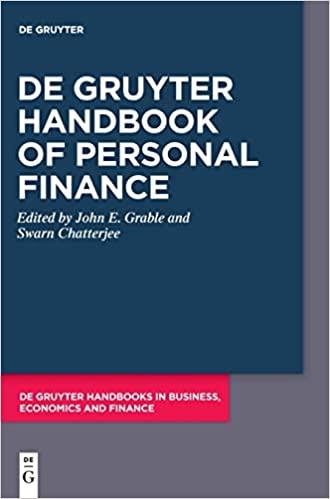
QUESTIONS:
1. What advantages/ disadvantages do the mutual funds offer compared to company stock for your retirement investing?
2. Notice that, for every dollar you invest, S&S air also invests a dollar. What return on your investment does this represent? What does your answer suggest about matching programs
3. Assume you decide you should invest at least part of your money in large capitalization stocks of companies based in the United States. What are the advantages and disadvantages of choosing the Arias Large-Company Stock Fund compared to Arias S&P 500 index fund?
4. The returns of the Arias Small-Cap Fund are the most volatile of all the mutual funds offered in the 401(K) plan. Why would you ever want to invest in this fund? When you examine the expenses of the mutual funds, you will notice that this fund also has the highest expenses. Will this affect your decision to invest in this fund?

Chris Guthrie then explains that the retirement investment options offered for employees are as follows: 1. Company stock. One option is stock in S&S Air. The company is currently privately held. The price you would pay for the stock is based on an annual appraisal, less a 20 percent discount. When you interviewed with the owners, Mark Sexton and Todd Story, they informed you that the company stock was expected to be publicly sold in three to five years. If you needed to sell the stock before it became publicly traded, the company would buy it back at the then-current appraised value. 2. Arias S&P 500 Index Fund. This mutual fund tracks the S&P 500. Stocks in the fund are weighted exactly the same as they are in the S&P 500. This means that the fund's return is approximately the return of the S&P 500, minus expenses. With an index fund, the manager is not required to research stocks and make investment decisions, so fund expenses are usually low. The Arias S&P 500 Index Fund charges expenses of 20 percent of assets per year. 3. Arias Small-Cap Fund. This fund primarily invests in small capitalization stocks. As such, the returns of the fund are more volatile. The fund also can invest 10 percent of its assets in companies based outside the United States. This fund charges 1.70 percent of assets in expenses per year. 4. Arias Large-Company Stock Fund. This fund invests primarily in large capitalization stocks of companies based in the United States. The fund is managed by Melissa Arias and has outperformed the market in six of the last eight years. The fund charges 1.50 percent in expenses. 10-Year Annual Standard Return Deviation Arias S&P 500 Index Fund 11.80% 19.35% Arias Small-Cap Fund 15.12 27.95 Arias Large-Company Stock 11.15 21.16 Fund Arias Bond Fund 7.92 11.45 Chris Guthrie then explains that the retirement investment options offered for employees are as follows: 1. Company stock. One option is stock in S&S Air. The company is currently privately held. The price you would pay for the stock is based on an annual appraisal, less a 20 percent discount. When you interviewed with the owners, Mark Sexton and Todd Story, they informed you that the company stock was expected to be publicly sold in three to five years. If you needed to sell the stock before it became publicly traded, the company would buy it back at the then-current appraised value. 2. Arias S&P 500 Index Fund. This mutual fund tracks the S&P 500. Stocks in the fund are weighted exactly the same as they are in the S&P 500. This means that the fund's return is approximately the return of the S&P 500, minus expenses. With an index fund, the manager is not required to research stocks and make investment decisions, so fund expenses are usually low. The Arias S&P 500 Index Fund charges expenses of 20 percent of assets per year. 3. Arias Small-Cap Fund. This fund primarily invests in small capitalization stocks. As such, the returns of the fund are more volatile. The fund also can invest 10 percent of its assets in companies based outside the United States. This fund charges 1.70 percent of assets in expenses per year. 4. Arias Large-Company Stock Fund. This fund invests primarily in large capitalization stocks of companies based in the United States. The fund is managed by Melissa Arias and has outperformed the market in six of the last eight years. The fund charges 1.50 percent in expenses. 10-Year Annual Standard Return Deviation Arias S&P 500 Index Fund 11.80% 19.35% Arias Small-Cap Fund 15.12 27.95 Arias Large-Company Stock 11.15 21.16 Fund Arias Bond Fund 7.92 11.45








